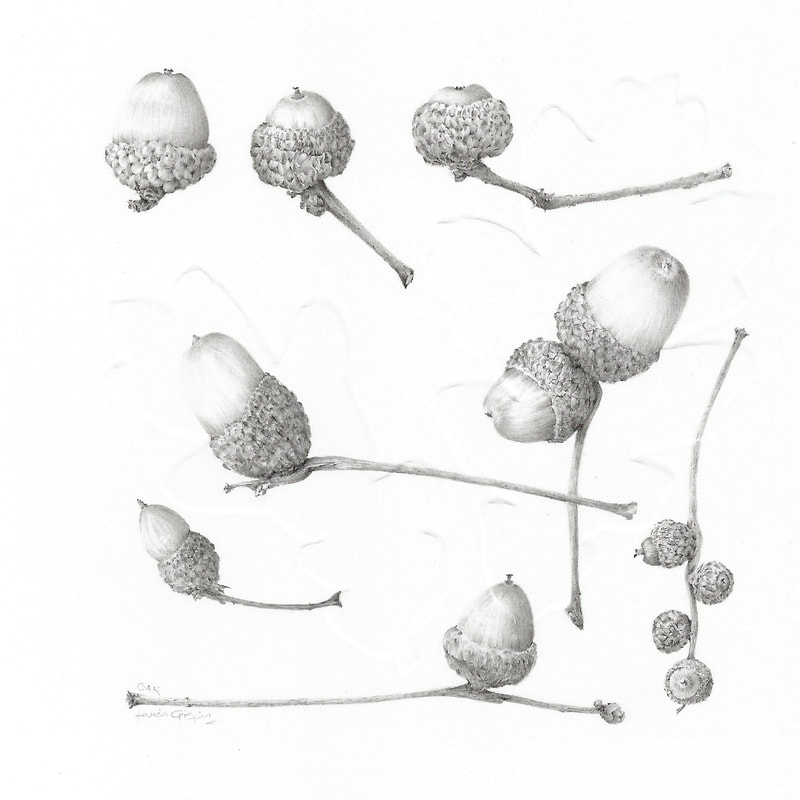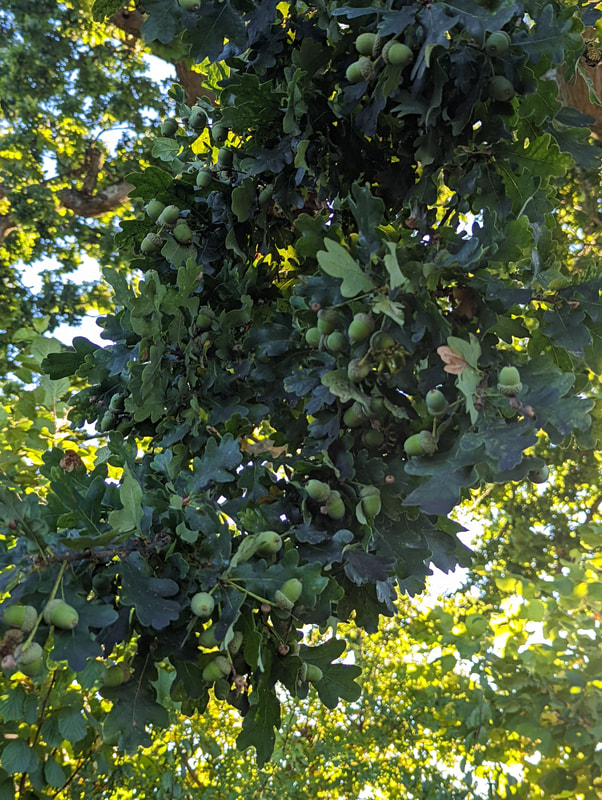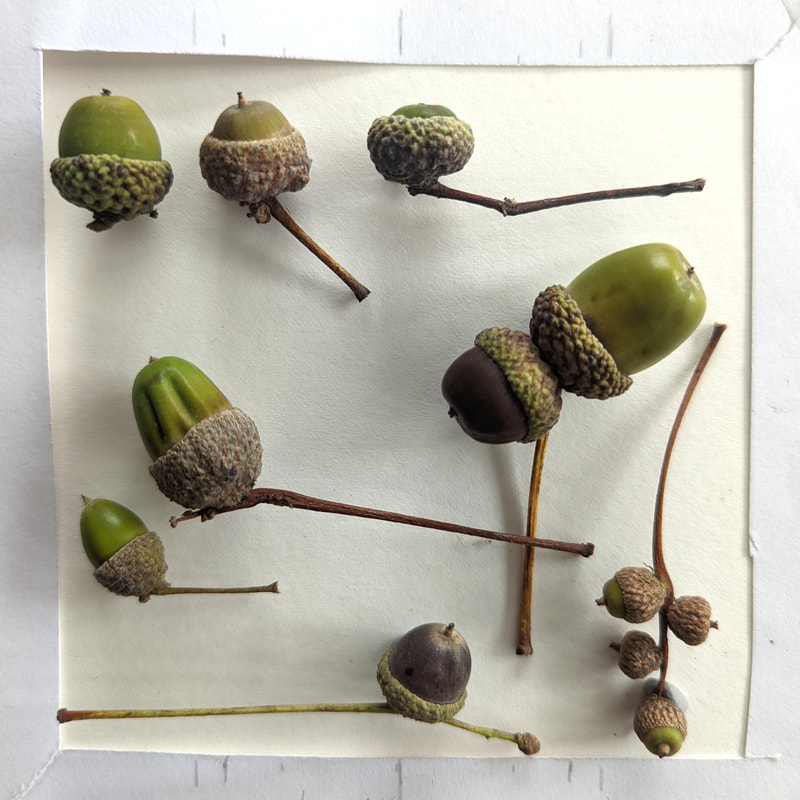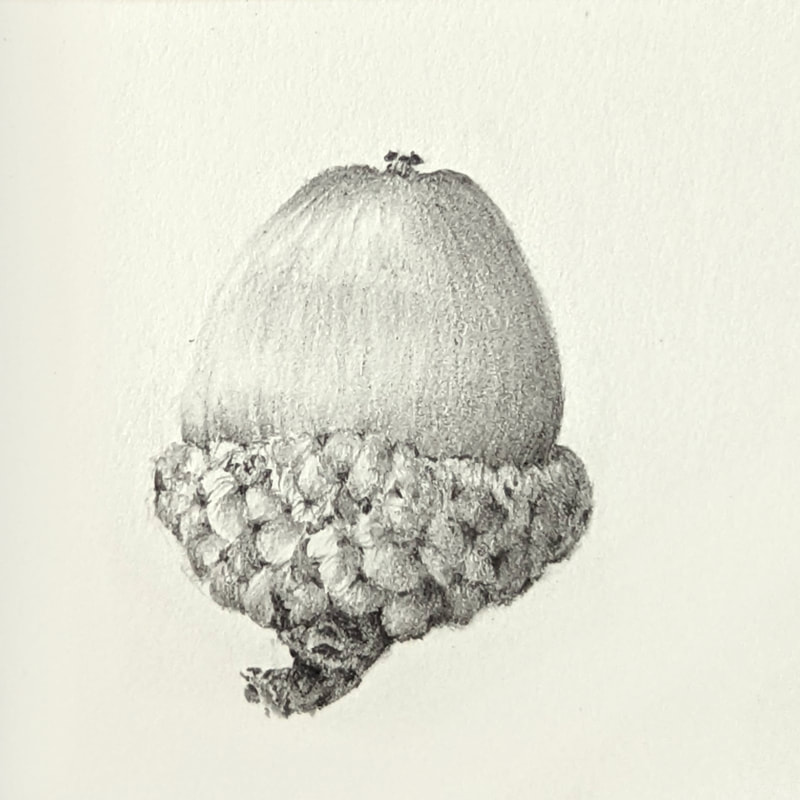|
This selection of acorns was collected late August along a short stretch of the Sussex Border Path which I had been walking almost daily to visit my mother in hospital. The half hour walk home was a time for reflection and reconnection with nature as the path wandered along orchard edges with many mature Oak standards. Read on for my thoughts and research during the drawing process
Oaks belong in the Beech family of trees and many other varieties have been planted in parks and gardens at least since the 1500s. A hybrid of the English and the Sessile is known as Quercus x rosacea. I noticed a huge variety of acorn sizes and shapes on the ground. Looking up, the trees were laden - possibly a mast year? But then around the corner the Oaks were empty, so something to do with location? Location and weather patterns during pollination and growth will obviously have an impact but this isn't the whole story. Stress on a plant will encourage seed production, so a previously dry summer or particularly harsh winter may also have an effect (a dying tree will often produce a bumper crop in it's final summer). There appears to be some debate over Mast Years. One theory is that every 5-10 years or so the trees co-ordinate to produce a bumper crop of acorns, far in excess of the needs of the local wildlife population and so ensuring that some remain to germinate and produce the next generation of Oak Trees. These are known as Mast Years (The term comes from "the Old English mæst, meaning the nuts of forest trees that have accumulated on the ground".) Producing seed takes a huge amount of energy, so subsequent years will be less plentiful and a boom in the dependent wildlife will be checked. When you live to be several hundred years old, it's not unreasonable to conserve energy and reproduce every few years. It is still not known how (and if) the trees co-ordinate these bumper years. I was under the impression that acorns needed to be away from the trees to germinate, often through Jays collecting the seed and storing it for winter food. However as I walked I noticed a number of seedlings on the edge of the footpath, where the earth had been disturbed by ploughing.
The dark smudges in the final drawing are shadows from embossed leaves in the background... impossible to photograph! You may also be interested to read this article that I stumbled across during my research about how trees may react to the future increases in CO2.
0 Comments
Your comment will be posted after it is approved.
Leave a Reply. |
Studio BlogWhen there's something happening in the studio you might like to know. If you would like irregular email updates for this blog and/or my Nature Diary or FlightPath Project, you can sign up here:
Archives
January 2024
Categories
All
|
Louisa Crispin
|
Oak Cottage, Talbot Road,
Hawkhurst Kent TN18 4LU (UK) |
|








